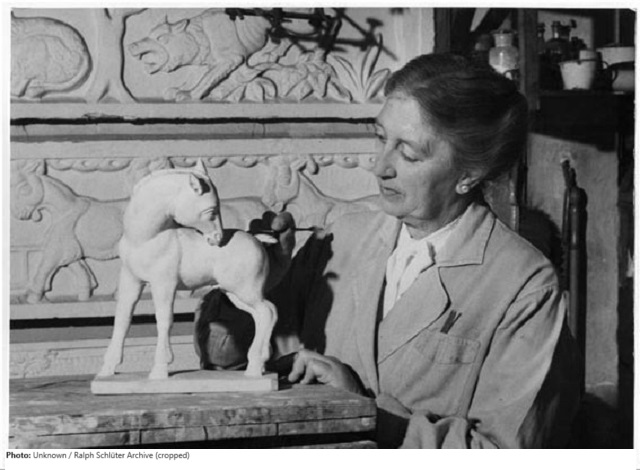Gra Rueb

Biographical information
| Roles | Competed in Olympic Games |
|---|---|
| Sex | Female |
| Full name | Gerharda Johanna Wilhelmina "Gra"•Rueb |
| Used name | Gra•Rueb |
| Born | 4 September 1885 in Breda, Noord-Brabant (NED) |
| Died | 26 December 1972 (aged 87 years 3 months 22 days) in Den Haag (The Hague), Zuid-Holland (NED) |
| NOC |  Netherlands Netherlands |
Biography
A student of Toon Dupuis, Gra Rueb lived in Paris for some years to learn from noted sculptor Émile-Antoine Bourdelle. Returning to Den Haag she became a profile producer of statues, busts and plaques. Noted works include a statue of the boy from “Hans Brinker, or the Silver Skates” with his finger in a dyke (in Spaarndam) and busts of Queen Wilhelmina and her husband (Rotterdam City Hall). Rueb’s most interesting work from an Olympic perspective is her 1928 memorial statue for Frederik, Baron van Tuyll van Serooskerken, the first Dutch IOC member and first Dutch NOC president. It portrays a man giving the Olympic salute. This makes the statue slightly controversial, as the action resembles the Nazi salute.
Her bronze statue Boxer was first exhibited in 1927 at a group exhibition by the “Arti et Amicitiae” association in Amsterdam. According to Dutch sources, the same work is said to have been exhibited in Los Angeles together with the Boxer by Dupuis. However, the official documents do not confirm this.
Results
| Games | Discipline (Sport) / Event | NOC / Team | Pos | Medal | As | |
|---|---|---|---|---|---|---|
| 1928 Summer Olympics | Art Competitions |  NED NED |
Gra Rueb | |||
| Sculpturing, Statues, Open (Olympic) |